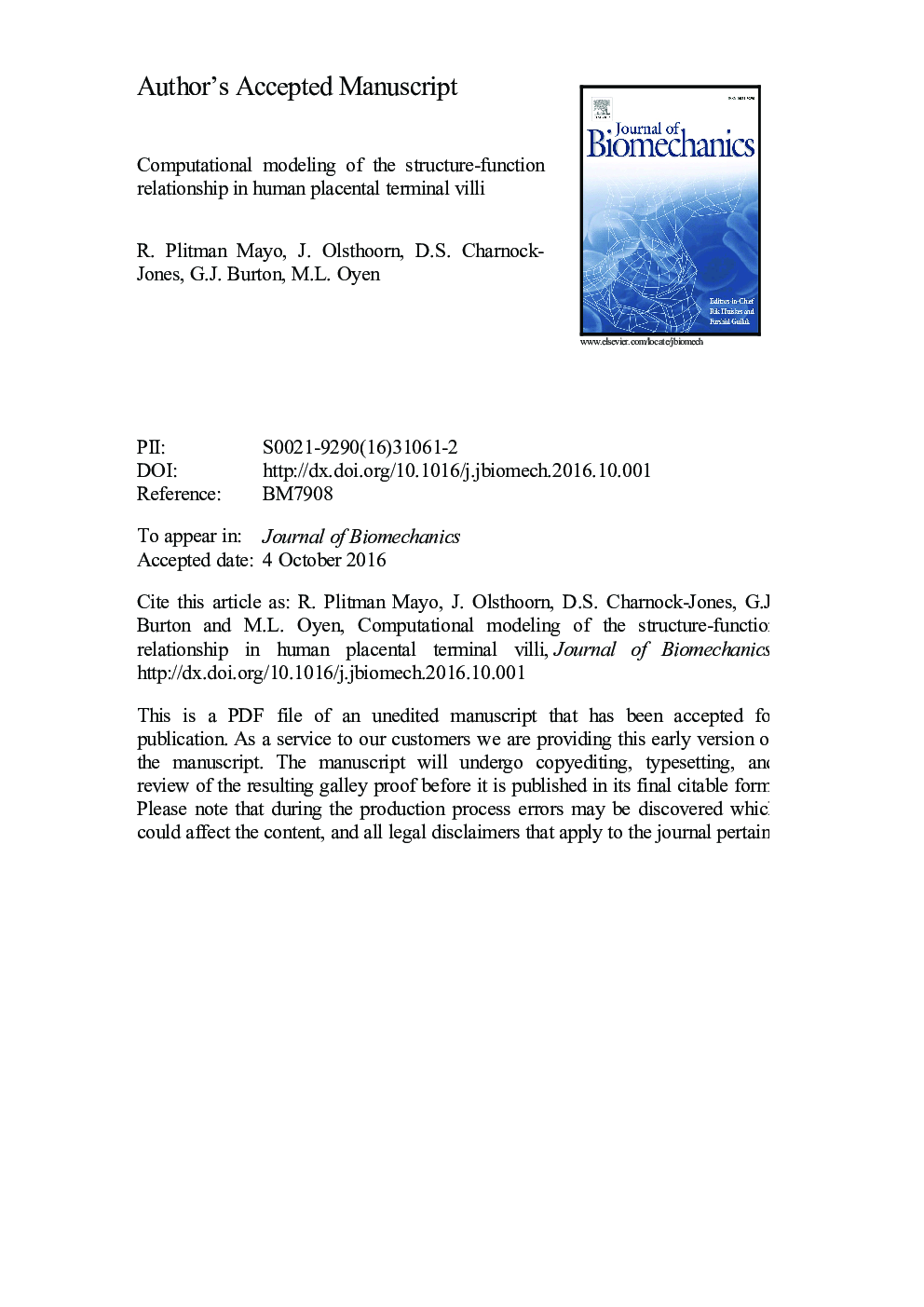| Article ID | Journal | Published Year | Pages | File Type |
|---|---|---|---|---|
| 5032274 | Journal of Biomechanics | 2016 | 18 Pages |
Abstract
Placental oxygen transport takes place at the final branches of the villous tree and is dictated by the relative arrangement of the maternal and fetal circulations. Modeling techniques have failed to accurately assess the structure-function relationship in the terminal villi due to the geometrical complexity. Three-dimensional blood flow and oxygen transport was modeled in four terminal villi reconstructed from confocal image stacks. The blood flow was analyzed along the center lines of capillary segments and the effect of the variability in capillary diameter, tortuosity and branching was investigated. Additionally, a validation study was performed to corroborate the simulation results. The results show how capillary variations impact motion of the fetal blood, and how their bends and dilatations can decelerate the flow by up to 80%. Vortical flow is also demonstrated not to develop in the fetal capillaries. The different geometries are shown to dictate the transport of gases with differences of over 100% in the oxygen flux between samples. Capillary variations are key for efficient oxygen uptake by the fetus; they allow the blood to decelerate where the villous membrane is thinnest allowing for a better oxygenation, but also by reducing the vessel diameter they carry the oxygenated blood away fast. The methodology employed herein could become a platform to simulate complicated in-vivo and in-vitro scenarios of pregnancy complications.
Related Topics
Physical Sciences and Engineering
Engineering
Biomedical Engineering
Authors
R. Plitman Mayo, J. Olsthoorn, D.S. Charnock-Jones, G.J. Burton, M.L. Oyen,
